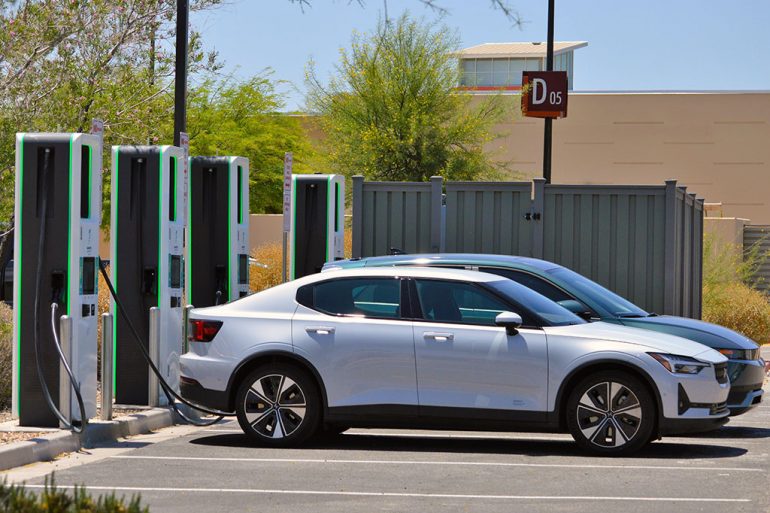
Public charging for electric vehicles (EVs) is causing frustration among drivers, according to a recent J.D. Power study. The report reveals that customer satisfaction with Level 2 charging has dropped by 16 points to 617 on a 1,000-point scale, marking the lowest level since the study’s inception in 2021. Fast charger satisfaction has experienced an even steeper decline, plummeting by 20 points to 654. Brent Gruber, J.D. Power’s Executive Director of the EV practice, warns that continually decreasing charging satisfaction could hinder the acceptance of EVs.
The survey, which polled over 15,000 battery electric vehicle and plug-in hybrid owners in the first half of the year, evaluates owner satisfaction with Level 2 charging stations (taking 4 to 10 hours for 80% charge) and DC fast charger stations (providing similar charge in around 20 minutes). Factors considered include charging speed and convenience, station condition and location, activities available during charging, safety perception, ease of locating stations, and charging cost and payment convenience.
The United States has been expanding its EV infrastructure as part of President Joe Biden’s green energy push. While the country added around 6,300 fast chargers last year, mostly Tesla Superchargers, the deployment is set to accelerate with increased federal funding. Tesla’s decision to open part of its Supercharger network to rival EVs is expected to improve accessibility, but it remains uncertain if non-Tesla owners will report the same satisfaction.
Gruber points out that the adaptation process is impacting EV charging satisfaction. As more drivers transition to EVs, a larger portion of survey respondents may express dissatisfaction as they adjust to the new charging infrastructure. Many EV drivers are encountering differences in payment methods and accessibility across various charging networks.
Unlike traditional gas stations that offer a consistent user experience, EV drivers encounter varying payment methods and access procedures. Dissatisfaction stems from longer charging times and reliability issues. The study found that 20% of users visited chargers but didn’t utilize them due to factors like lengthy queues and malfunctioning equipment. Gruber emphasizes the need for a seamless and efficient charging experience, which is not currently being met.
Tesla’s Supercharger network stands out in terms of satisfaction. It secured the top spot for Level 2 charging (with a score of 661) and fast charging (with a score of 739) for the third consecutive year. Tesla’s decision to open its network to non-Tesla owners could broaden access but poses uncertainties regarding satisfaction levels among these users. However, as automakers like Ford and General Motors adopt Tesla’s charging technology starting in 2025, the need for adapters when using Tesla’s Superchargers should decrease.

Lloyd Tobias is a seasoned automotive journalist and passionate enthusiast with over 15 years of experience immersed in the world of cars. Whether it’s exploring the latest advancements in automotive technology or keeping a close pulse on breaking industry news, Lloyd brings a sharp perspective and a deep appreciation for all things automotive. His writing blends technical insight with real-world enthusiasm, making his contributions both informative and engaging for readers who share his love for the drive. When he’s not behind the keyboard or under the hood, Lloyd enjoys test driving the newest models and staying ahead of the curve in an ever-evolving automotive landscape.